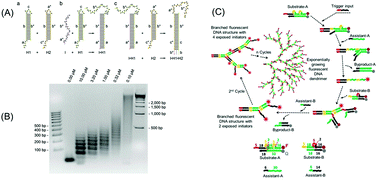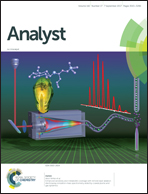Enzyme-free, signal-amplified nucleic acid circuits for biosensing and bioimaging analysis
Abstract
Enzyme-free, signal-amplified nucleic acid circuits utilize programmed assembly reactions between nucleic acid substrates to transduce a chemical input into an amplified detection signal. These circuits have shown great potential for developing biosensors for high-sensitivity and high-selectivity detection of varying targets including nucleic acids, small molecules and proteins in vitro and for high-contrast in situ visualization and imaging of these targets in tissues and living cells. We review the background of the enzyme-free, signal-amplified nucleic acid circuits, including their mechanism, significance, types and development. We also review current applications of these circuits for biosensors and bioimaging.



 Please wait while we load your content...
Please wait while we load your content...